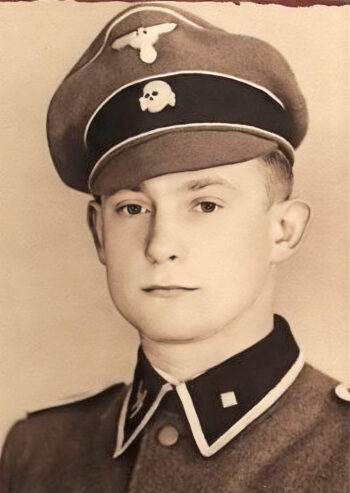Stark, Hans

Hans Stark (14 June 1921 – 29 March 1991), SS Oberscharführer, served at the Auschwitz Camp from Christmas 1940 to November 1942, with an extended furlough from Christmas 1941 until the end of March 1942. In June 1941, he joined the Political Department. In preparation of the Frankfurt Auschwitz show trial, he was interrogated on 23 April 1959. During the trial itself, he also took the stand. Here are some of Stark’s peculiar claims:
Stark claimed that the alleged gas chamber inside Crematorium I had just one door looking like an air-raid-shelter door, but the morgue had two doors, none of which looked like an air-raid-shelter door. Such a door was installed only when the building was converted to an air-raid-shelter in 1944, when Stark had left the camp. Hence, he was reporting the situation as it has been shown since 1947 to tourists.
He insisted that the roof had two round openings of some 35 cm diameter, although the orthodoxy insists that there were (and are again) four square openings measuring some 50 cm × 50 cm.
Stark’s statements during his pre-trial deposition and during his trial testimony about a gassing, in which he claimed to have directly participated, are contradictory. The gassing concerned either “200–250 Jews” or “150 or 200 […] Jews and Poles”; the victims were gassed either for being Jews, including children, or because they were “people that had been sentenced to death by a court-martial,” but definitely without any children.
Once the Zyklon B had been dumped onto the people inside, it took only “a few minutes” for all to be quiet (hence unconscious). Yet the poison absorbed in the Zyklon-B gypsum pellets evaporates and dissipates only slowly, so it would have taken at least ten, if not twenty minutes for all victims to collapse unconscious.
After some 10–15 minutes, the room was allegedly opened, but it would have taken hours to ventilate a room where Zyklon pellets keep emitting the poison for at least another hour.
Stark reported about homicidal gassings in two wooden houses erected in early 1942 close to the railway ramp at Birkenau. However, Stark was not even present in that camp in early 1942, the railway ramp at Birkenau was built only in 1944, and such wooden gassing houses near that or any other railway ramp are completely unheard of.
When shown photos taken in 1944 of Jews arriving at the Birkenau railway ramp, he confirmed that this shows the situation as he knew it. However, the ramp shown on those photos didn’t exist during Stark’s time at the camp.
Stark admitted that he was a lavish consumer of Auschwitz literature, hence we are dealing here with a clear case of false memory syndrome.
(For more details, see Mattogno 2016c, pp. 67-71.)

You need to be a registered user, logged into your account, and your comment must comply with our Acceptable Use Policy, for your comment to get published. (Click here to log in or register.)